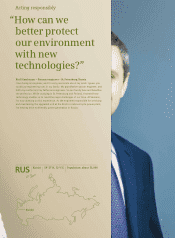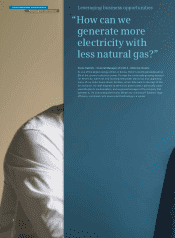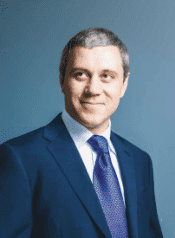Siemens 2013 Annual Report Download - page 13
Download and view the complete annual report
Please find page 13 of the 2013 Siemens annual report below. You can navigate through the pages in the report by either clicking on the pages listed below, or by using the keyword search tool below to find specific information within the annual report.-
 1
1 -
 2
2 -
 3
3 -
 4
4 -
 5
5 -
 6
6 -
 7
7 -
 8
8 -
 9
9 -
 10
10 -
 11
11 -
 12
12 -
 13
13 -
 14
14 -
 15
15 -
 16
16 -
 17
17 -
 18
18 -
 19
19 -
 20
20 -
 21
21 -
 22
22 -
 23
23 -
 24
24 -
 25
25 -
 26
26 -
 27
27 -
 28
28 -
 29
29 -
 30
30 -
 31
31 -
 32
32 -
 33
33 -
 34
34 -
 35
35 -
 36
36 -
 37
37 -
 38
38 -
 39
39 -
 40
40 -
 41
41 -
 42
42 -
 43
43 -
 44
44 -
 45
45 -
 46
46 -
 47
47 -
 48
48 -
 49
49 -
 50
50 -
 51
51 -
 52
52 -
 53
53 -
 54
54 -
 55
55 -
 56
56 -
 57
57 -
 58
58 -
 59
59 -
 60
60 -
 61
61 -
 62
62 -
 63
63 -
 64
64 -
 65
65 -
 66
66 -
 67
67 -
 68
68 -
 69
69 -
 70
70 -
 71
71 -
 72
72 -
 73
73 -
 74
74 -
 75
75 -
 76
76 -
 77
77 -
 78
78 -
 79
79 -
 80
80 -
 81
81 -
 82
82 -
 83
83 -
 84
84 -
 85
85 -
 86
86 -
 87
87 -
 88
88 -
 89
89 -
 90
90 -
 91
91 -
 92
92 -
 93
93 -
 94
94 -
 95
95 -
 96
96 -
 97
97 -
 98
98 -
 99
99 -
 100
100 -
 101
101 -
 102
102 -
 103
103 -
 104
104 -
 105
105 -
 106
106 -
 107
107 -
 108
108 -
 109
109 -
 110
110 -
 111
111 -
 112
112 -
 113
113 -
 114
114 -
 115
115 -
 116
116 -
 117
117 -
 118
118 -
 119
119 -
 120
120 -
 121
121 -
 122
122 -
 123
123 -
 124
124 -
 125
125 -
 126
126 -
 127
127 -
 128
128 -
 129
129 -
 130
130 -
 131
131 -
 132
132 -
 133
133 -
 134
134 -
 135
135 -
 136
136 -
 137
137 -
 138
138 -
 139
139 -
 140
140 -
 141
141 -
 142
142 -
 143
143 -
 144
144 -
 145
145 -
 146
146 -
 147
147 -
 148
148 -
 149
149 -
 150
150 -
 151
151 -
 152
152 -
 153
153 -
 154
154 -
 155
155 -
 156
156 -
 157
157 -
 158
158 -
 159
159 -
 160
160 -
 161
161 -
 162
162 -
 163
163 -
 164
164 -
 165
165 -
 166
166 -
 167
167 -
 168
168 -
 169
169 -
 170
170 -
 171
171 -
 172
172 -
 173
173 -
 174
174 -
 175
175 -
 176
176 -
 177
177 -
 178
178 -
 179
179 -
 180
180 -
 181
181 -
 182
182 -
 183
183 -
 184
184 -
 185
185 -
 186
186 -
 187
187 -
 188
188 -
 189
189 -
 190
190 -
 191
191 -
 192
192 -
 193
193 -
 194
194 -
 195
195 -
 196
196 -
 197
197 -
 198
198 -
 199
199 -
 200
200 -
 201
201 -
 202
202 -
 203
203 -
 204
204 -
 205
205 -
 206
206 -
 207
207 -
 208
208 -
 209
209 -
 210
210 -
 211
211 -
 212
212 -
 213
213 -
 214
214 -
 215
215 -
 216
216 -
 217
217 -
 218
218 -
 219
219 -
 220
220 -
 221
221 -
 222
222 -
 223
223 -
 224
224 -
 225
225 -
 226
226 -
 227
227 -
 228
228 -
 229
229 -
 230
230 -
 231
231 -
 232
232 -
 233
233 -
 234
234 -
 235
235 -
 236
236 -
 237
237 -
 238
238 -
 239
239 -
 240
240 -
 241
241 -
 242
242 -
 243
243 -
 244
244 -
 245
245 -
 246
246 -
 247
247 -
 248
248 -
 249
249 -
 250
250 -
 251
251 -
 252
252 -
 253
253 -
 254
254 -
 255
255 -
 256
256 -
 257
257 -
 258
258 -
 259
259 -
 260
260 -
 261
261 -
 262
262 -
 263
263 -
 264
264 -
 265
265 -
 266
266 -
 267
267 -
 268
268 -
 269
269 -
 270
270 -
 271
271 -
 272
272 -
 273
273 -
 274
274 -
 275
275 -
 276
276 -
 277
277 -
 278
278 -
 279
279 -
 280
280 -
 281
281 -
 282
282 -
 283
283 -
 284
284 -
 285
285 -
 286
286 -
 287
287 -
 288
288 -
 289
289 -
 290
290 -
 291
291 -
 292
292 -
 293
293 -
 294
294 -
 295
295 -
 296
296 -
 297
297 -
 298
298 -
 299
299 -
 300
300 -
 301
301 -
 302
302 -
 303
303 -
 304
304 -
 305
305 -
 306
306 -
 307
307 -
 308
308 -
 309
309 -
 310
310 -
 311
311 -
 312
312 -
 313
313 -
 314
314 -
 315
315 -
 316
316 -
 317
317 -
 318
318 -
 319
319 -
 320
320 -
 321
321 -
 322
322 -
 323
323 -
 324
324 -
 325
325 -
 326
326 -
 327
327 -
 328
328 -
 329
329 -
 330
330 -
 331
331 -
 332
332 -
 333
333 -
 334
334 -
 335
335 -
 336
336 -
 337
337 -
 338
338 -
 339
339 -
 340
340 -
 341
341 -
 342
342 -
 343
343 -
 344
344 -
 345
345 -
 346
346 -
 347
347 -
 348
348 -
 349
349 -
 350
350 -
 351
351 -
 352
352 -
 353
353 -
 354
354 -
 355
355 -
 356
356 -
 357
357 -
 358
358 -
 359
359 -
 360
360 -
 361
361 -
 362
362 -
 363
363 -
 364
364 -
 365
365 -
 366
366 -
 367
367 -
 368
368 -
 369
369 -
 370
370 -
 371
371 -
 372
372
 |
 |

– The turbine hall of Unit at the
Kirishi power plant is enormous.
Siemens engineer Andrey Lukashkin
(right) is on site five days a week,
working with plant employees to
monitor the system.
– Once a month, Kirill Gamburger
(left) travels from St. Petersburg
to Kirishi to consult personally with
his Siemens colleague Andrey
Lukashkin, who works at the plant.
Increase in capacity 500
MW
The modernization of Unit 6 at the
Kirishi power plant nearly tripled
the unit’s installed capacity, from
about 300 to 800 megawatts.
Siemens project manager Kirill Gamburger
is responsible for ensuring that the up-
graded Unit 6 at the Kirishi power plant
operates smoothly. The engineering pro-
fession runs in the blood of this passionate
engineer. Gamburger, who also devotes his
free time to technology-related pursuits, is
descended from three engineers – follow-
ing in the footsteps of not only his mother
and father but of his grandfather as well.
And he’s not the only family member to up-
hold the tradition: his brothers also studied
engineering in St. Petersburg. At Siemens,
Gamburger can put his skills to the test:
“I’m primarily responsible for long-term
service agreements that run for six to
twelve years – or 50% to 100% of a gas
turbine’s entire lifecycle. I organize the de-
livery of replacement parts, recruit employ-
ees, prepare work plans and schedules,
and coordinate all these processes in con-
sultation with the plant staff.” Gamburger
will remain in charge of Kirishi’s repowered
Unit 6 throughout its lifecycle since plant
operator OGK-2 and Siemens have signed a
service agreement for the gas turbines and
generators that extends from 2013 to 2025.
The growing energy needs
of a vibrant region
Russia’s huge reserves of natural gas and
petroleum are extremely important for the
country’s economy and its roughly 143 mil-
lion inhabitants as well as for meeting the
energy needs of Europe and Asia. As one of
the world’s largest electricity producers,
Russia is facing new challenges. According
to Russian government forecasts, demand
for electricity will increase 50% by 2030.
The problem is that many of the country’s
power plants are outdated. According to
Russia’s Ministry of Energy, half the coun-
try’s steam power plants have been in
operation for anywhere from 32 to 50 years,
and another 22% were commissioned over
50 years ago. In view of the low efficiency
of many of these plants, Russia is investing
heavily to expand its power-generating
capacity.
But supply bottlenecks cannot be elimi nat-
ed simply by building new power plants.
The only way to ensure that businesses and
residents have ample, reliable supplies of
power is to boost the efficiency of existing
plants as well. Russia currently generates
most of its electricity at aging steam power
plants. Our upgrade at Kirishi impressively
demonstrates how the peak output and
energy efficiency of existing facilities can
be dramatically improved.
Energy-efficient and
environ mentally friendly
A failure at Kirishi’s Unit 6 would have neg-
ative consequences for the power supply
in St. Petersburg and across the northwest-
ern region of Russia. As project manager,
Kirill Gamburger has a great deal of re-
sponsibility for the power plant’s availabil-
ity and performance. He also keeps a close
eye on operating costs for his customer:
“We’re now making better use of valuable
natural gas, and our customer is benefit-
ing from substantial cost savings. Just con-
sider the comparison: the efficiency of the
old units was 38%, while the new units are
reaching 55%. That means we need one-
third less natural gas to generate the same
amount of electricity.” And this increased
efficiency also benefits the environment:
“One-third less natural gas per kilowatt-
hour of electricity means one-third fewer
emissions of climate-damaging carbon
dioxide per kilowatt-hour,” notes Kirill
Gamburger. PAGE
1
2
Protecting the environment
Generating power more efficiently
